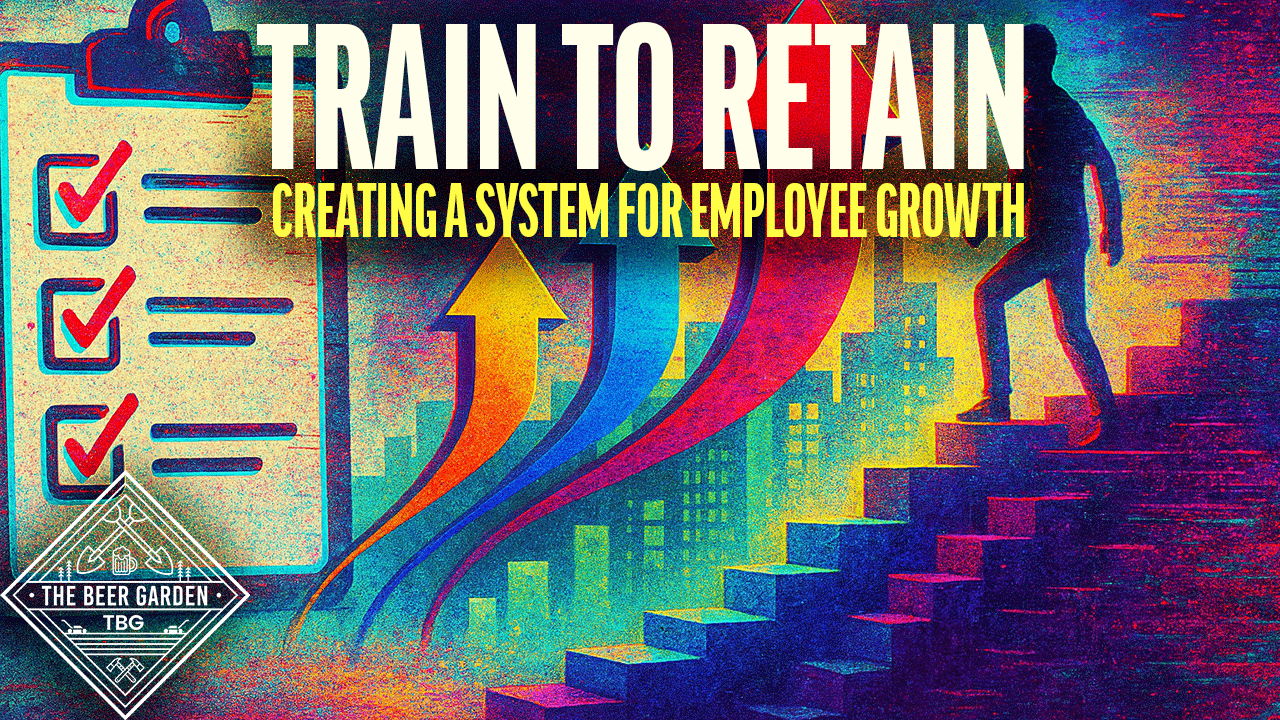Train to Retain: Creating a System for Employee Growth

Let’s be honest—most of us in landscaping and snow removal started with a “training program” that sounded a lot like: “Here’s a shovel, follow that guy.”
But in today’s world, if you want to build a team that sticks around, performs well, and grows with your company, that just doesn’t cut it.
In this post, we’re breaking down how to build a training system that actually works—one that improves performance, boosts retention, and helps develop your future leaders.
Why Training Matters (And Not Just for Newbies)
Training is more than a new hire orientation checklist. A well-built training program can:
-
Speed up onboarding and reduce rookie mistakes
-
Standardize quality across your crews
-
Show team members there’s a path forward
-
Free up your senior people from always “fixing” things
-
Improve morale and retention
Step 1: Define the Goals of Your Training Program
Start with the “why.” Your training program should help you:
-
Get new hires efficient, fast
-
Create consistency in work quality
-
Reduce errors and callbacks
-
Develop internal leaders
-
Build a repeatable, scalable system
If your company is growing (or wants to), this step is non-negotiable.
Step 2: Build a Structured Onboarding Plan
The first 30–90 days of an employee’s experience shape their long-term success.
What to include:
-
Company culture, mission, and expectations
-
Safety protocols (PPE, OSHA, equipment use)
-
Core skills training: mowing, trimming, snow ops, etc.
-
Customer interaction do’s and don’ts
-
Checklists for key skills/tasks
Bonus: simulate services (yes, even snowplowing—get creative with mulch or dioramas).
Step 3: Offer Ongoing Development for Existing Staff
Training doesn’t stop after onboarding. If you want to retain talent, you need to continue developing it.
Ideas for long-term training:
-
Monthly or quarterly workshops
-
Cross-training on new services/equipment
-
Advanced leadership and communication modules
-
Mentorship opportunities
The result? Fewer plateaus, more promotions from within.
Step 4: Use a Skill Progression & Certification Model
Create a ladder. Give people something to climb.
Example Progression:
-
Level 1: Entry-level crew (basic mowing/trimming)
-
Level 2: Skilled technician (complex equipment/troubleshooting)
-
Level 3: Crew lead (project oversight, customer communication)
-
Level 4: Manager (scheduling, estimating, leadership)
Tie this to your standardized pay structure and offer rewards—raises, bonuses, leadership tracks, etc.
Step 5: Mix Up the Methods
Not everyone learns the same way. Use a blend of:
-
Written or virtual content (intro concepts)
-
Controlled environment training (sandbox-style)
-
Shadowing & peer learning (on-the-job)
-
Competency checks with score benchmarks
Pro tip: use a simple model like DORAGI (Demonstrate, Observe, Re-Demonstrate, Assign a Task, Goal Setting, Inspect) to guide hands-on sessions.
Step 6: Make It Measurable
If you don’t track it, it didn’t happen.
-
Keep training logs and track completions
-
Use a digital platform like Trainual, or even a spreadsheet
-
Conduct regular check-ins and performance reviews
-
Re-certify if standards slip
-
Assign a training owner—they’ll keep the wheels turning
Final Thoughts
A strong training program won’t just make your team better—it’ll make your company more efficient, your jobs more profitable, and your culture a whole lot stronger.
Start small, stay consistent, and iterate as you go. If you tie training to compensation and create a path for career growth, your best people won’t just stick around—they’ll grow into the leaders your business needs next.
🎧 Want the full breakdown?
Check out our latest episode of The Beer Garden podcast:
"Train to Retain: Creating a System for Employee Growth"
Available on YouTube, Apple, Spotify, or wherever you get your podcasts.
Need Help?
If you need help implementing these strategies or have questions about growing your landscape or snow removal business, feel free to reach out. We're here to support your journey toward a successful and stress-free future, don’t hesitate to contact us here. We’re here to help you every step of the way.
A solid training program helps create consistent systems in your business. IssueID standardizes your site management systems and streamlines those processes! With photo documentation, inspection tracking, and site-based workflows, it’s the perfect companion to drive proactive maintenance, higher margins, and improved customer satisfaction. Try it out for free today!


